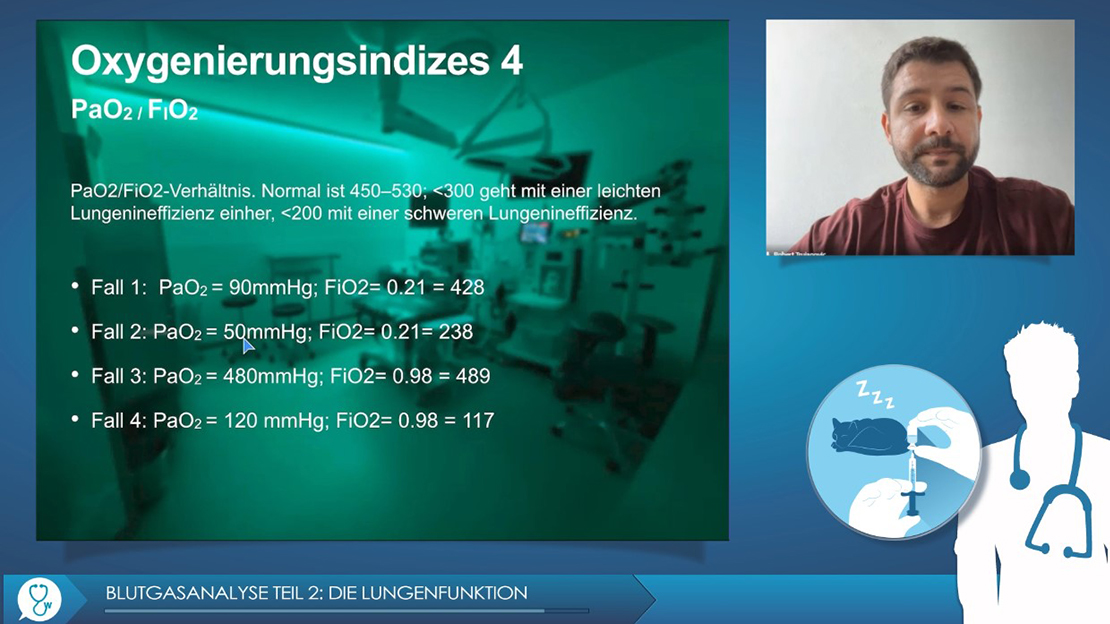Blutgasanalyse Teil 2: Die Lungenfunktion
Dr. Robert TRUJANOVIC
Duration : 22 min
Dipl. ECVAA
Respiratory
Anesthesiology and analgesia
Hematology biochemistry

- Den Unterschied zwischen Hypoxie und Hypoxämie kennen.
- Mit der Alveolargasgleichung vertraut sein und verstehen, wie sie zur Berechnung des A-a-Gradienten verwendet wird.
- Mit den Oxygenierungsindizes vertraut sein.
- Hypoxie oder Sauerstoffmangel bezeichnet eine den ganzen Körper eines Lebewesens oder Teile davon betreffende Mangelversorgung mit Sauerstoff
- Unter Hypoxämie versteht man einen verminderten Sauerstoffgehalt im Blut bzw. einen Sauerstoffmangel.
- Ein PaO2 von <80 mmHg wird streng als Hypoxämie eingestuft, einige klassifizieren jedoch eine leichte Hypoxämie als PaO2 80–90 mmHg; mäßig 60–80 mmHg; und schwerwiegend <60 mmHg.
Dr Robert Trujanovic studied at the Faculty of Veterinary Medicine in Belgrade, where he graduated in veterinary medicine in 2015. He moved to Vienna in 2015 to start his position as assistant doctor in anesthesiology at the University of Veterinary Medicine Vienna, and later, he completed his internship there from 2017-2018.
During this time, his interest in veterinary anesthesia deepened further and he started a residency at the Vetmeduni Vienna in 2018, which was completed in 2021.
In addition, he is a passionate regional anesthetist, passing on his knowledge through the latest learning methods. He led a team of experts in veterinary medicine and invested a great deal of passion into creating the first mobile app - the Vet RA App - focused on the most commonly used nerve blocks in small animals.
During this time, his interest in veterinary anesthesia deepened further and he started a residency at the Vetmeduni Vienna in 2018, which was completed in 2021.
In addition, he is a passionate regional anesthetist, passing on his knowledge through the latest learning methods. He led a team of experts in veterinary medicine and invested a great deal of passion into creating the first mobile app - the Vet RA App - focused on the most commonly used nerve blocks in small animals.

